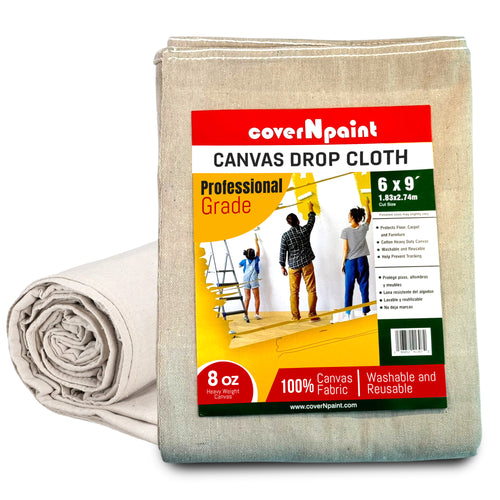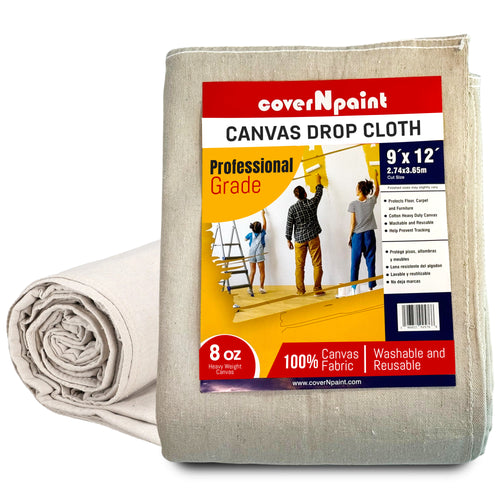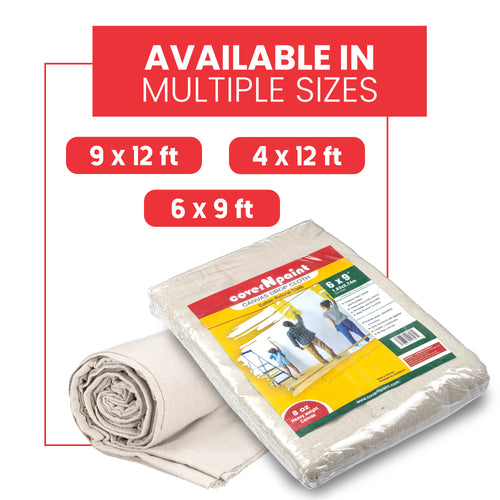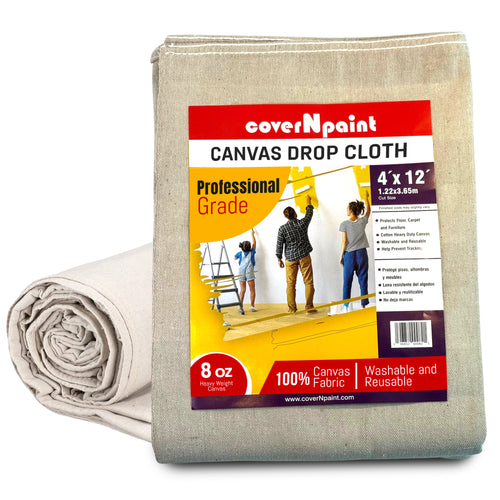When starting a painting project—whether it’s refreshing a living room or tackling a large renovation—protecting your surfaces is essential. Many homeowners and DIY painters use paint tarps or painters drop cloths to prevent splatters and spills, but one common question persists: “Are paint tarps waterproof?”
This guide explores the truth behind paint tarp waterproofing, debunks common myths, and explains the best practices for keeping your workspace clean, safe, and efficient.
Understanding Paint Tarps And Their Purpose
Paint tarps—sometimes called drop cloths—serve one simple yet crucial role: they protect floors, furniture, and fixtures from paint drips, dust, and debris. But not all drop cloths are the same. The material determines how they perform, how long they last, and whether they’re waterproof or simply water-resistant.
Let’s explore the key types used by painters today.
1. Canvas Drop Cloths
Canvas drop cloths are the classic choice used by professional painters for decades. They are made from woven cotton, known for:
-
Durability: Can handle heavy use and foot traffic.
-
Absorbency: Soaks up paint drips rather than letting them pool.
-
Reusability: Washable and long-lasting.
👉 However, canvas alone is not fully waterproof. It absorbs moisture but prevents most paint from seeping through when thick and tightly woven. Many modern versions include a poly-backed layer to enhance waterproofing.
2. Plastic Paint Tarps
Plastic or polyethylene paint tarps are completely waterproof. They create a sealed barrier that prevents any liquid from penetrating.
Pros:
-
Ideal for protecting carpets or delicate flooring.
-
Inexpensive and lightweight.
Cons:
-
Can tear easily.
-
Slippery to walk on—posing safety risks.
If you’re curious about how to prevent accidents when using such materials, check out our guide on Painters Drop Cloth Safety Guide: Preventing Slips, Trips, And Falls.
3. Canvas-Poly Blends
This hybrid combines the strength of canvas with the waterproofing power of polyethylene backing. These are popular among professionals who want reusability without compromising protection.
-
Best for: Indoor painting, hardwood floors, and long projects.
-
Feature: Water can’t pass through the backing, but the top remains absorbent
Are Paint Tarps Really Waterproof? The Facts
The short answer: Some are, some aren’t.
Waterproofing depends on the material, construction, and coating of the tarp. Here’s a closer look at the facts vs myths that cause confusion.
Myth 1: All Paint Tarps Are Waterproof
Fact: Only plastic and poly-backed canvas drop cloths are truly waterproof. Plain canvas tarps are water-resistant, meaning they slow down liquid absorption but don’t block it completely.
Myth 2: Canvas Drop Cloths Leak Easily
Fact: A thick, tightly woven canvas drop cloth rarely leaks under normal painting conditions. The fibers absorb drips before they can pass through. Only when paint is spilled excessively or left to sit can it soak through.
Myth 3: Plastic Tarps Are Always Better
Fact: Plastic is fully waterproof but less safe. It tends to slide on smooth floors and can trap wet paint on its surface, causing smearing when stepped on. For professional work, canvas or hybrid tarps remain the top choice.
Myth 4: Adding A Liner Is Unnecessary
Fact: Using an additional liner—such as an old sheet or thin plastic under a canvas drop cloth—adds another protective layer, particularly for expensive flooring.
Testing The Waterproof Quality Of Your Paint Tarp
You can easily test your tarp’s waterproofing at home:
-
Lay a section flat on a dry surface.
-
Pour a small cup of water onto it.
-
Wait five minutes.
-
Check underneath for moisture.
If the underside stays dry, your paint tarp is effectively waterproof. If not, you can enhance its protection by spraying on a fabric waterproofing treatment or using a poly-backed version for future projects.
Best Practices For Using Paint Tarps
Even the best drop cloths can fail if used incorrectly. Follow these practices to get professional results every time.
1. Secure The Edges
Use painter’s tape or small weights to hold the tarp in place. This prevents tripping and ensures full coverage.
2. Layer For Added Protection
When working on large or sensitive surfaces, layer a canvas drop cloth over a plastic tarp. The top absorbs paint, while the bottom keeps moisture from reaching the floor.
3. Avoid Walking On Wet Paint
If you spill paint, clean it immediately. Walking over it can push the liquid through even thick tarps.
4. Wash And Reuse Properly
-
Shake off dried paint and debris.
-
Wash canvas tarps on a gentle cycle using cold water.
-
Dry completely before folding or storage.
5. Choose The Right Type For Each Task
-
Canvas drop cloths: For repeated use and professional jobs.
-
Plastic tarps: For quick, disposable coverage.
-
Hybrid tarps: For all-purpose use with waterproof reliability.
The Environmental Impact Of Reusable Tarps
Reusable canvas drop cloths are far more sustainable than disposable plastics. They reduce waste and save money over time. The shift toward eco-friendly materials is part of a larger movement in the painting industry to adopt sustainable tools without compromising quality.
A Curiosity-Building Note
While most people think of paint tarps as simple protective sheets, there’s an art to choosing and maintaining them for long-term use. coverNpaint USA has observed that professionals who clean, fold, and store their canvas drop cloths properly can reuse them for years. Small changes in how you handle your tarps can drastically improve performance, safety, and cost-efficiency—something even seasoned painters often overlook.
Benefits Of Knowing The Truth About Waterproof Paint Tarps
-
Informed Choices: Understand which tarp suits your project’s environment.
-
Safety Awareness: Prevent accidents through proper setup.
-
Cost Savings: Reuse and maintain instead of replacing frequently.
-
Sustainability: Favor eco-friendly, reusable materials.
FAQs
Q1: Are all paint tarps waterproof?
No. Only plastic and poly-backed canvas tarps are fully waterproof. Standard canvas versions are water-resistant.
Q2: How can I make my canvas drop cloth waterproof?
Apply a fabric waterproofing spray or use a poly-backed version for complete protection.
Q3: Can I reuse a paint tarp after washing?
Yes. Canvas and hybrid drop cloths can be washed and reused multiple times if dried thoroughly.
Q4: Are waterproof paint tarps safe to walk on?
Plastic tarps can be slippery. Always secure edges and check out our Painters Drop Cloth Safety Guide: Preventing Slips, Trips, And Falls for safe handling tips.
Q5: Which type of tarp is best for professional painters?
A canvas-poly blend offers the best balance of absorbency, durability, and waterproof protection.













